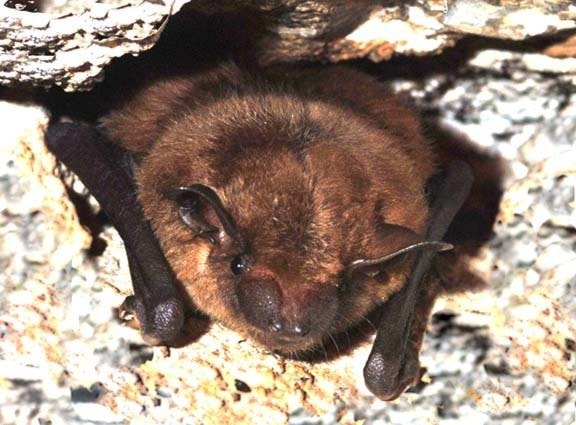For the Townsman
Conservation groups have answered a request from the B.C. government to help study a group of species soon to face devastating population die-offs — bats – and have released a report about bats in the Flathead River Valley just in time for Halloween.
The groups organized a formal inventory in July that brought together 10 bat biologists and seven citizen scientists to conduct the first-ever BioBlitz dedicated exclusively to the study of bat species in the Flathead. The BioBlitz follows a public plea made in June by B.C. Environment Minister Mary Polak, who asked citizen scientists to count bats because "there is surprisingly little known about local bat species and their numbers."
"We went one step further and gathered biologists for a four-day Bat BioBlitz in the Flathead," said Mark Worthing, Flathead Outreach Coordinator at Sierra Club BC. "They captured or acoustically detected two species of bats that are considered endangered at a national level, little brown myotis and northern myotis."
These two species have been decimated by the millions in eastern Canada by a fungal disease called White Nose Syndrome, which attacks bats while they are hibernating. The disease, introduced from Europe, is spreading westward in Canada.
Dr. Cori Lausen, a bat specialist at Wildlife Conservation Society Canada who led the Flathead Bat BioBlitz, said White Nose Syndrome has not yet been detected in B.C., but could arrive any time. If spread by bats alone and not humans, Lausen said the disease is expected to arrive within the next decade.
"We can only help bats if we know where they hibernate," she said. "No significant bat hibernacula have yet been discovered in B.C. and yet the Flathead is surrounded by karst, including the deepest cave in Canada. Through collaborations with cavers we have only just begun to search for bat hibernacula here. It's imperative that we continue the search in the Flathead for bat hibernacula since large clusters of bats may be present but undiscovered."
Lausen and her team captured seven different bat species during the BioBlitz, including the little brown myotis, silver-haired bat and hoary bat. They acoustically detected three more species, including the highly-endangered northern myotis and eastern red bat. Lausen's report, "July 2014 Bat Inventory of Flathead River Valley," says if the eastern red bat is present in the Flathead it would represent a provincial range extension of 850 kilometres south. This species resides east of the Continental Divide, in Waterton Lakes National Park adjacent to the Flathead, so if the eastern red bat moves over high altitudes it could be present in the Flathead.
The Bat BioBlitz was organized by six Canadian and U.S. conservation groups: Canadian Parks & Wilderness Society - BC Chapter, Headwaters Montana, National Parks Conservation Association, Sierra Club BC, Wildsight, Yellowstone to Yukon Conservation Initiative The groups are working to permanently protect B.C.'s Flathead, long recognized as the missing piece of the adjacent Waterton Glacier International Peace Park and World Heritage Site. They are calling for a national park in the southeastern one-third of the Flathead, and a Wildlife Management Area in the rest of the valley and adjoining habitat.
The groups also released a 5-minute video of the Bat BioBlitz made by award-winning filmmaker Leanne Allison.(vimeo.com/109662328)
